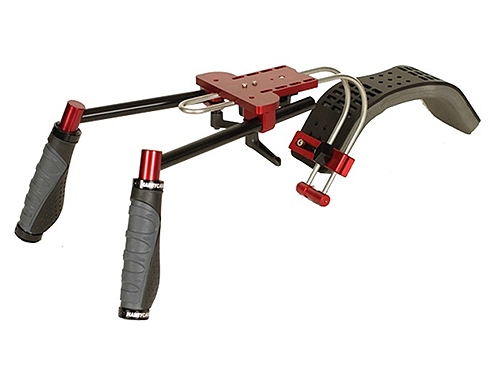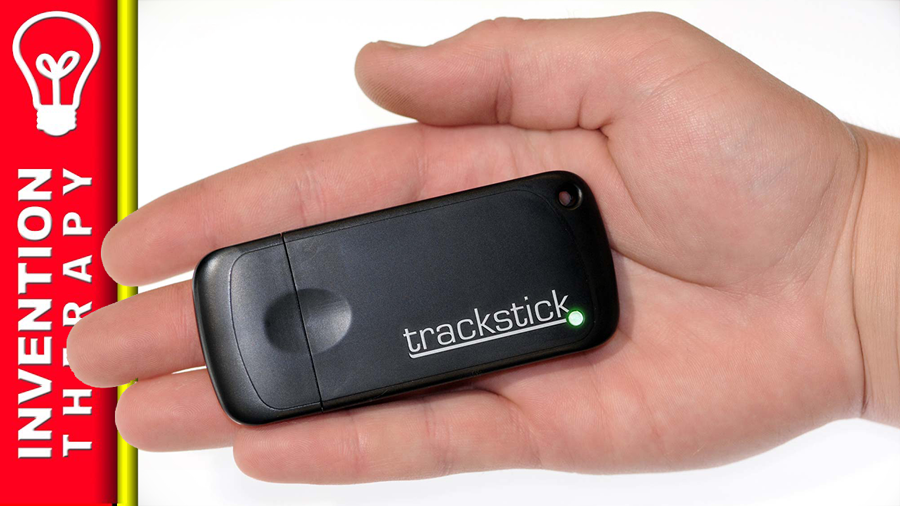Here is a list of the top twenty five mistakes that I made as a first time inventor. They are in no particular order but should offer you insight into what to expect on your journey as you turn your invention idea into a reality.
Not doing enough research.
This first mistake may seem obvious but often times in the beginning I made too many assumptions that later cost me money. When I made my first plastic injection molded parts, I relied on other people to design the enclosure for the Trackstick. I contacted many mold making companies and one of them referred me to a young Solidworks designer from Florida who claimed to have experience as a mold designer. His mistakes during the design process should have been obvious to me as an inventor but I had absolutely no experience in this area and just kept throwing money at would eventually become a useless injection mold.

My inability to do the correct research cost me over $20,000.00. The ironic part in this story is that after using Google correctly, I was able to locate a very experienced and reasonably priced mold making company within walking distance of my home in Burbank, California. I negotiated a good price on the correct enclosure design and was able to release the Trackstick with great success.
Relying on others for help.
Yes, we do need help form people wherever we can get it but one thing I have learned is that often it is better to just use people you don’t know directly and pay them for their service. Far too often, when you rely on your friends and family for help, things just take way longer than necessary.
As a professional inventor, it is my job, my responsibility, to get projects completed in a timely manner. It is also my obligation to pay people for their services. While this part can be a challenge at times, we all still have to fund our own inventions if we want to get them released to the marketplace. Waiting for help could leave us stranded for a long time while other similar ideas come to the marketplace.
Not getting started sooner.
As sated in the last paragraph, waiting for others can really set back the possibility of success for your invention idea. Another big factor is your own inability to get out of your chair and start working on your idea. The good news is that you actually don’t have to get up because you will be doing most of your early work from the computer. So really, there is no excuse for you not getting started right now.
Listening to people’s opinions about my invention idea.
This is a touchy subject and one that is hard to balance. We need to get people’s feedback but we also need to know when to ignore opinions. The problem here is that you are the only person that understands the marketplace for your idea so it is important that you trust your own judgement. Which leads me to the next common mistake I have made.
Talking myself out of success.
There are a million reasons for you not to try to prototype, manufacture and sell your products so I am not going to list them here. What you need to know is that it is human nature to think that you are going to fail. In fact, it takes many failures before most of us will be successful. There is only one guarantee here: If you don’t try, you have already failed. By trying, you have a 50% shot at succeeding so I ask you: What is really stopping you?
Misjudging the marketplace.
When I was selling beautifully designed, Italian inspired aluminum camera accessories, I got the idea to create a low cost line of plastic injection molded camera accessories. My wife and I spent around $40,000.00 on the molds only to learn that camera enthusiasts weren’t interested in low cost accessories. They want reasonably priced gear that looks expensive, is durable and performs well in the field.
Know your customers before you design your products.

Only partially filling product voids.
This is a continuation of the last mistake. Laziness and too much money coming in are the excuses I will use here. I was one of the first to market with pretty much all my ideas and many times I simply stopped innovating, sat back and collected the cash. This was great for awhile but then as others saw my success and how easy it was for me to make things, they realized that they could do it too.
It is important that you stay on top of your product development and keep releasing new products whenever you can. Consider this a WARNING because all products have a life cycle and eventually the cash will stop rolling in.
Getting lazy with success.
Laziness seems to be a theme here. That’s because it is the number one killer of innovation, at least in my life. Just because your product is successful now, doesn’t mean it will do well in the future. Technology, habits and interest change like the wind. You must be ready all the time with your next big idea.
Failing to improve the product.
Another symptom of laziness is failing to improve your product that is already working fine. Anyone that has designed and built something knows that there are always changes that can be made to improve the function, style or cost of a product. Make sure you are always refining your products and offering the best selection that you are capable of building.
Forgetting to keep accurate financial records.
The tax man will get you. This is the number one reason businesses fail in my opinion. Failing to keep proper financial records is not only important for the tax collector but you, as the business owner, need to know the health of the company.
Keep good records early on. Save every receipt during the design and prototyping process and as the sales and business grow.
Trusting people in business.
This is a catch 22 because I deal with many trustworthy people in business all over the world. I rely on people in China, Europe and the United States and honestly can’t say that anyone has ever been less than honest with me. My relationships have been built over the years and are very solid. What you don’t want to do is assume that you have found the right suppliers or manufacturers from the beginning. These will change over time as that trust is lost and you find more qualified or more dedicated companies and people.
Not trusting people in business.
Yet another contradiction. I tell you not to trust people in business and then claim I made the mistake of not trusting people in business. Which is it? Well both! You have to use your instincts and know who to reveal certain things to. This may mean sharing your invention ideas with businesses but without any kind of formal agreement or NDA. Use your own judgement and make the choices that are best for you. People can be your biggest asset during your journey as an inventor.
Being afraid to ask businesses for help.
I talked about my biggest life’s mistake being that I took on an investor instead of finding other solutions. I later found out that most of the businesses that were helping me during my preparation phases for manufacturing would have given me all kinds of special deals just to help establish me as a good paying customer.
I am not saying that you should go around making empty promises as to how many units you plan on selling or how great a success your invention is going to be. I mean, all I should have done was to be honest and told these people that I didn’t have enough money to launch the product. I should have asked them if there was any way they could help me lower my startup costs.
Another word of CAUTION! It is my personal belief that you should never ask anyone for something for free. If they offer it, its OK to accept but it is best to just ask for help and see what happens. Otherwise, you run the risk of looking foolish and not being taken seriously as a professional business person.
Thinking my invention was going to make me rich.
Reality check! Very few inventors get rich with any single product. It is more of a life long journey where you will try to acquire some wealth along the way. The problem for inventors is that we spend all of our time dreaming up our next big invention idea. This also means that any money we make from our inventions will likely go right back into our next adventure.
Thomas Edison was quoted saying “My main purpose in life is to make enough money to create ever more inventions”
Inside tip: If you plan on getting rich as an inventor, the first thing you need to do is keep good financial records. (see above)
Thinking my product might not succeed.
This is called “second guessing”. Once you have done all the research and invested your time and hard earned money, it is important that you follow through and just release the product. Work hard on your marketing and you should start seeing sales if you did all your groundwork correctly. It may be a slow start but you will be able to learn along the way.
Thinking my product would succeed.
I contradict myself yet again. Nobody really knows which ideas are good or bad. There are only the ideas that we turn into a reality. It is only then that we find out whether or not our product was a success. There is no point in looking at a product from a success or failure standpoint. There are inventors that released products with millions of dollars in sales only to lose all the money during the manufacturing process and others that have relatively small investments and make a few hundred thousand dollars of pure profit.
Success or failure is a very difficult thing to measure in the world of inventing.
Not believing in myself.
This will be a short one. Yes, i have let other people talk me out of building some of my invention ideas. It was my own insecurity that made me listen to those negative voices in my head.
All I can say is be positive and give your idea the opportunity to flourish.
Risking too much money.
Believe it or not, some of my most successful inventions were the cheapest and easiest to get to market. Some have made millions of dollars and some have simply paid the mortgage over the years. Either way, I consider them a success.
Don’t risk more money than you can afford to lose. That is my only advice here.
Not risking enough money.
If you have the money, time and resources than by all means, spend what you can without risking more than you can afford. No matter how much capital is available to you, be smart and cautious. I have seen many people with very deep pockets overspend on their inventions out of pure ego. Those products were no more likely to succeed or fail than someone’s who struggled with raising money to get their idea off the ground.
Spending money on fancy packaging.
If you plan on selling mainly via the internet, single color printed boxes or standard white boxes with a color label or sleeve are the best way to go. Spend your money on the product but save it on the packaging.
Forgetting to calculate shipping as part of manufacturing costs.
I once knew three college students that launched a successful Kickstarter campaign for a large desk lamp. They raised $150,000.00 in funding but never bothered to estimate the cost of shipping a very heavy metal product worldwide. The shipping costs alone sucked up all their money and they were left financing the rest of their project out of their own pockets.
Underestimating the time it would take to design a product.
I am guilty of this one right now. I never seem to be able to estimate the time it will really take to complete the design and testing phase of my product. It always takes much longer than I anticipated. Just make sure you allow for longer than expected design times.
Underestimating the time it would take to manufacture a product.
Same goes for this one. Always allow for unforeseen events including major mistakes in your design that didn’t show up until manufacturing. This should not happen if you built your prototype as a ready to market product but I still have this problem every now and then. You can minimize the chances of it happening but like they say: if it can go wrong, it probably will.
Underestimating demand and forgetting to stock enough inventory.
We talked about inventory management and not going overboard by stocking too much product. This part isn’t an exact science and you will always have to juggle customer demand, cash flow and product on hand. It is just something you learn over time.
One word of advice. The internet is unpredictable and I have had traffic spikes of thousands of visitors in one day to a website. This will quickly sell out an entire months supply of products and there is usually nothing you can do. I try to keep my customers informed and refund anyone who doesn’t want to wait. I do not like marking products “out of stock” as it sends a message to potential buyers that there may be something wrong.
Not buying real estate for the business soon enough.
My last piece of advice is about investing the money you make from your inventions. When Trackstick took off in sales, I had very low monthly expenses even with millions of dollars in sales. The product never touched my hands and was shipped directly from my manufacturing facility. Because of this, I didn’t need office space and never bothered to look for any real estate to purchase. Fast forward fifteen years and I wish I had purchased a commercial building in California. Although I didn’t need it back then, I do need it today. I purchased a building recently but paid more than double what it would have cost me back then.
Be sure to invest some of the money you make with your inventions.

Are you ready to become an inventor?
Getting your idea out of your head and into your hands is only the first in a long set of steps towards becoming a successful inventor.

First Steps To A Successful Invention
At Invention Therapy, we believe that the power of the internet makes it easier than you think to turn your invention idea into a reality. In most cases, you can build a prototype and start manufacturing a product on your own. Changing your way of thinking can be difficult. Being an inventor requires you to balance your passion with the reality of having to sell your products for a profit. After all, if we can't make a profit, we won't be able to keep the lights on and continue to invent more amazing things!Please subscribe to our Youtube Channel!




